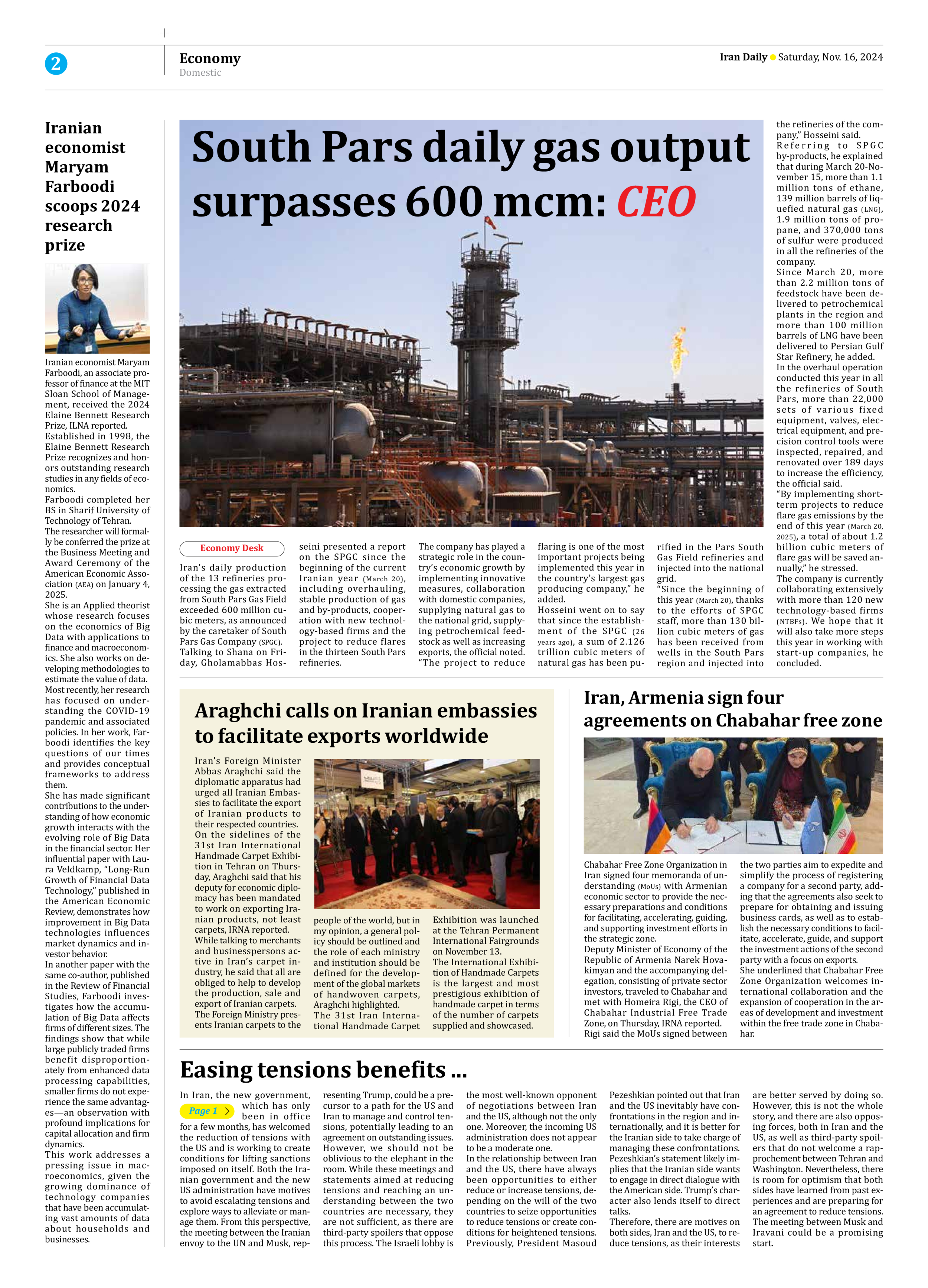
South Pars daily gas output surpasses 600 mcm: CEO
Iran’s daily production of the 13 refineries processing the gas extracted from South Pars Gas Field exceeded 600 million cubic meters, as announced by the caretaker of South Pars Gas Company (SPGC).
Talking to Shana on Friday, Gholamabbas Hosseini presented a report on the SPGC since the beginning of the current Iranian year (March 20), including overhauling, stable production of gas and by-products, cooperation with new technology-based firms and the project to reduce flares in the thirteen South Pars refineries.
The company has played a strategic role in the country’s economic growth by implementing innovative measures, collaboration with domestic companies, supplying natural gas to the national grid, supplying petrochemical feedstock as well as increasing exports, the official noted.
“The project to reduce flaring is one of the most important projects being implemented this year in the country’s largest gas producing company,” he added.
Hosseini went on to say that since the establishment of the SPGC (26 years ago), a sum of 2.126 trillion cubic meters of natural gas has been purified in the Pars South Gas Field refineries and injected into the national grid.
“Since the beginning of this year (March 20), thanks to the efforts of SPGC staff, more than 130 billion cubic meters of gas has been received from wells in the South Pars region and injected into the refineries of the company,” Hosseini said.
Referring to SPGC by-products, he explained that during March 20-November 15, more than 1.1 million tons of ethane, 139 million barrels of liquefied natural gas (LNG), 1.9 million tons of propane, and 370,000 tons of sulfur were produced in all the refineries of the company.
Since March 20, more than 2.2 million tons of feedstock have been delivered to petrochemical plants in the region and more than 100 million barrels of LNG have been delivered to Persian Gulf Star Refinery, he added.
In the overhaul operation conducted this year in all the refineries of South Pars, more than 22,000 sets of various fixed equipment, valves, electrical equipment, and precision control tools were inspected, repaired, and renovated over 189 days to increase the efficiency, the official said.
“By implementing short-term projects to reduce flare gas emissions by the end of this year (March 20, 2025), a total of about 1.2 billion cubic meters of flare gas will be saved annually,” he stressed.
The company is currently collaborating extensively with more than 120 new technology-based firms (NTBFs). We hope that it will also take more steps this year in working with start-up companies, he concluded.







